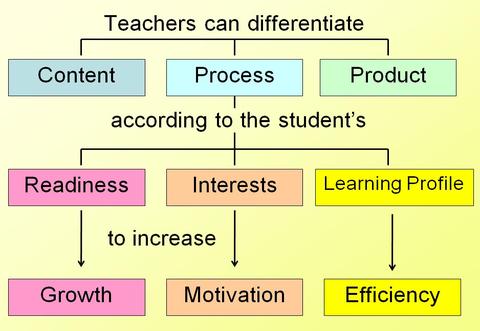Unit 8- The Beginning and the End!
Differentiated instruction allows teachers to plan a curriculum that is flexible for all learners and takes into consideration the learners’ needs, learning profiles, interest areas and readiness (Tomlinson, 2001).

In developing my mind map, I thought about what it meant to differentiate instruction for my learners and ways that this could be possible. The first thing I considered was the variability of my learners based on their learning styles and preferences, areas that each learner needed support in the most and was interested in. This gave me an overview of what my learning environment should comprise of when I plan on differentiating.

I also considered Tomlinson’s (2001) characteristics of a good differentiated environment/lesson. The first point that stood out to me was that a differentiated classroom encourages multitasking because teachers can plan for and monitor many activities amongst different learners at the same time. Also, in order for a learning experience to encourage brainstorming and critical thinking, it has to be qualitative. Teachers have to plan and implement a curriculum that is engaging, flexible and raises curiosity in the minds of students, in a loving and nurturing environment. This curriculum has to be diverse in order to encourage intelligent and intriguing discussions amongst learners.
As we have progressed through this course, however, one thing that I will definitely add to my mind map is students’ readiness. This is crucial when developing individual plans because it allows one to really consider the learning activities that will enhance students’ skills. When a curriculum is personalized for the learners, it is easy to get active participation and ensure that every student is having fun as he/she is learning.
References
Tomlinson, C. A. (2001). What differentiated instruction is – and isn’t. In How to differentiate instruction in mixed-ability classrooms, (2nd Edition, pp. 1-7). Alexandria, VA: Association for Supervision and Curriculum Development.